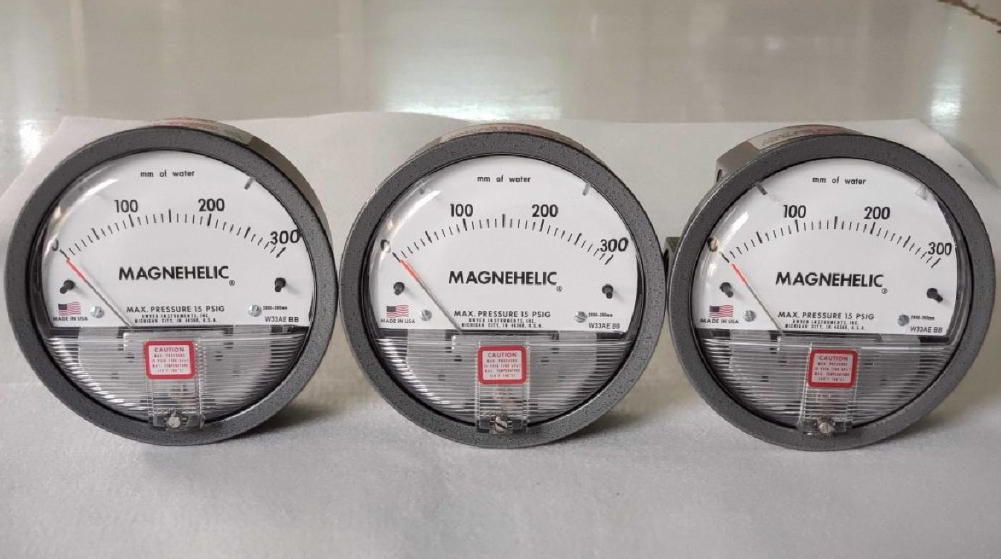How to Install and Calibrate Dwyer Pressure Gauges Most Accurately
Posted on: 10/04/2025
Dwyer pressure gauges play a critical role in HVAC systems, helping to monitor and control pressure accurately. To ensure the device operates efficiently, proper installation and calibration are essential. This article will provide detailed instructions on how to do this.
Dwyer pressure gauges are important devices in HVAC systems, helping to monitor and control pressure to ensure stable operational performance. Proper installation and calibration not only increase the accuracy of the device but also extend its lifespan. In this article, we will learn how to install and calibrate Dwyer pressure gauges most accurately.
Instructions for Installing Dwyer Pressure Gauges
1. Preparation Before Installation
Before proceeding with the installation, ensure the following conditions:
-
Determine a suitable installation location, avoiding strong vibrations or excessively high temperatures.
-
Check pipeline connections to prevent pressure leaks.
-
Ensure the pressure gauge is suitable for the pressure range to be measured.

2. Installation Steps
-
Step 1: Determine the installation location; choose a place that is easy to observe and periodically check.
-
Step 2: Use anti-leak tape (e.g., PTFE tape) or rubber gaskets at threaded connection points to ensure a tight seal. (Instrumentation Term: PTFE Tape, Thread Sealant)
-
Step 3: Attach the pressure gauge to the pipe or adapter with moderate force to avoid damaging the threads.
-
Step 4: Check the connection by slowly opening the pressure source and observing the operation of the gauge.
Instructions for Calibrating Dwyer Pressure Gauges
Calibrating a pressure gauge is an important step to ensure the device measures accurately according to standards. This process should be performed periodically to maintain the reliability of the device. (Instrumentation term: Calibration)
1. Preparation Before Calibration
-
Choose a stable working environment, avoiding vibrations or sudden temperature changes.
-
Use a high-accuracy calibration device (e.g., a deadweight tester, pressure calibrator, or calibrated reference gauge). (Instrumentation Term: Pressure Calibrator, Reference Gauge)
-
Ensure the pressure gauge is not damaged before calibration.
2. Calibration Steps
-
Step 1: Connect the pressure gauge to the dedicated calibration equipment.
-
Step 2: Apply a reference pressure and compare the displayed value with the standard.
-
Step 3: If there is an error, make adjustments using the adjustment screw or accompanying software. (Note: Many Dwyer gauges, especially Magnehelics, have a zero adjustment, but span adjustments may require factory calibration.)
-
Step 4: Recheck several times to ensure the pressure gauge operates accurately.
See more products: [2000-100MM PRESSURE GAUGE](link to product - replace with actual link) See more products: [2300-60PA PRESSURE GAUGE](link to product - replace with actual link)
Conclusion
Proper installation and calibration of Dwyer pressure gauges are crucial factors in ensuring that the HVAC system operates stably and accurately. Performing these steps periodically not only helps maintain accuracy but also minimizes risks during operation. If you are looking for a reliable pressure measurement solution, Dwyer is one of the top choices for modern HVAC systems.
DLK is proud to be a provider of high-quality measurement solutions in Vietnam, including Dwyer pressure gauges. With experience in the industry and a team of experienced experts, DLK is committed to providing genuine products with the best technical support services.
DLK is currently distributing genuine Dwyer pressure gauges in Vietnam, providing quality products with dedicated technical consulting services. Contact DLK now for detailed advice and professional installation support.
DLK Trading Service Company Limited
Address: G6/14 Tran Van Giau, Le Minh Xuan Ward, Binh Chanh District, Ho Chi Minh City
Office: 111/7 Vuon Lai, Phu Tho Hoa Ward, Tan Phu District, Ho Chi Minh City
Website: https://dlk.com.vn/
Email: info@dlk.com.vn
Hotline: 070 357 0101 – 093 279 2697